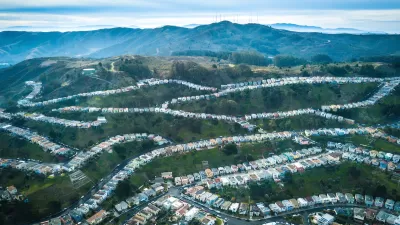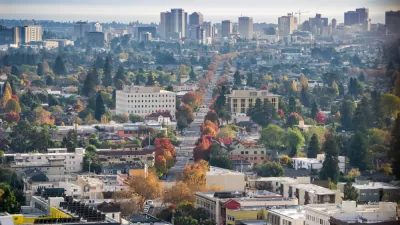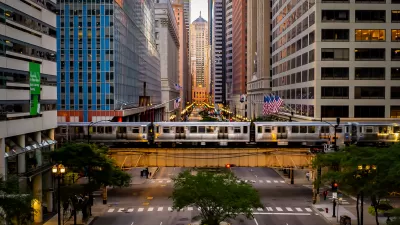The recurring theme in horror movies of newly-arrived tenants being haunted by former tenants and vengeful spirits may be seen as a metaphor for gentrification, writes Sam Miller.
"[T]he process of gentrification -- the shifting demographics, the clash of old and new tenants, and the monstrous machinations of landlords bent on pushing out rent-controlled tenants -- [is a] nightmare so pervasive it would surely rate broader attention if it wasn't a "normal" consequence of capitalism.
[In many horror movies] rich city folks move out into the country and find themselves up against nasty poor locals and ghost[s]. The more I thought about this recurrent motif, the more I realized: the modern haunted house film is fundamentally about gentrification. Again and again we see fictional families move into spaces from which others have been violently displaced, and the new arrivals suffer for that violence even if they themselves have done nothing wrong.
This thriving subgenre depends upon the audience believing, on some level, that what "we" have was attained by violence, and the fear that it will be taken by violence. In the process, because mainstream audiences are seen as white, and because gentrification predominantly impacts communities of color, the racial Other becomes literally monstrous.
Displacement creates a paradox: We acknowledge the wrong that has been done but feel powerless to do anything about it. A sort of collective guilt springs up, a sense that we are insignificant cogs in the machinery of economic and social factors that create gentrification. This is particularly true for the middle class, who are often forced by economic necessity to move to gentrifying neighborhoods or to new suburban developments that have demolished pre-existing space.
Gentrification is itself something of a ghost -- trivialized by the mainstream media, ignored by government, distorted in academia as "impossible to quantify," or obfuscated by policymakers -- as in a report from the Brookings Institution that somehow wonders Does Gentrification Harm the Poor? Because the "audience" for gentrification is always the poor, people of color, immigrants, working class seniors, and combinations of the above, the realities of gentrification are usually "invisible" to those who shape the public's understanding of the issues."
FULL STORY: Haunted House Films Are Really About the Nightmares of Gentrification

Depopulation Patterns Get Weird
A recent ranking of “declining” cities heavily features some of the most expensive cities in the country — including New York City and a half-dozen in the San Francisco Bay Area.

California Exodus: Population Drops Below 39 Million
Never mind the 40 million that demographers predicted the Golden State would reach by 2018. The state's population dipped below 39 million to 38.965 million last July, according to Census data released in March, the lowest since 2015.

Chicago to Turn High-Rise Offices into Housing
Four commercial buildings in the Chicago Loop have been approved for redevelopment into housing in a bid to revitalize the city’s downtown post-pandemic.

How California Transit Agencies are Addressing Rider Harassment
Safety and harassment are commonly cited reasons passengers, particularly women and girls, avoid public transit.

Significant Investments Needed to Protect LA County Residents From Climate Hazards
A new study estimates that LA County must invest billions of dollars before 2040 to protect residents from extreme heat, increasing precipitation, worsening wildfires, rising sea levels, and climate-induced public health threats.

Federal Rule Raises Cost for Oil and Gas Extraction on Public Lands
An update to federal regulations raises minimum bonding to limit orphaned wells and ensure cleanup costs are covered — but it still may not be enough to mitigate the damages caused by oil and gas drilling.
City of Costa Mesa
Licking County
Barrett Planning Group LLC
HUD's Office of Policy Development and Research
Mpact Transit + Community
HUD's Office of Policy Development and Research
City of Universal City TX
ULI Northwest Arkansas
City of Laramie, Wyoming
Urban Design for Planners 1: Software Tools
This six-course series explores essential urban design concepts using open source software and equips planners with the tools they need to participate fully in the urban design process.
Planning for Universal Design
Learn the tools for implementing Universal Design in planning regulations.



















